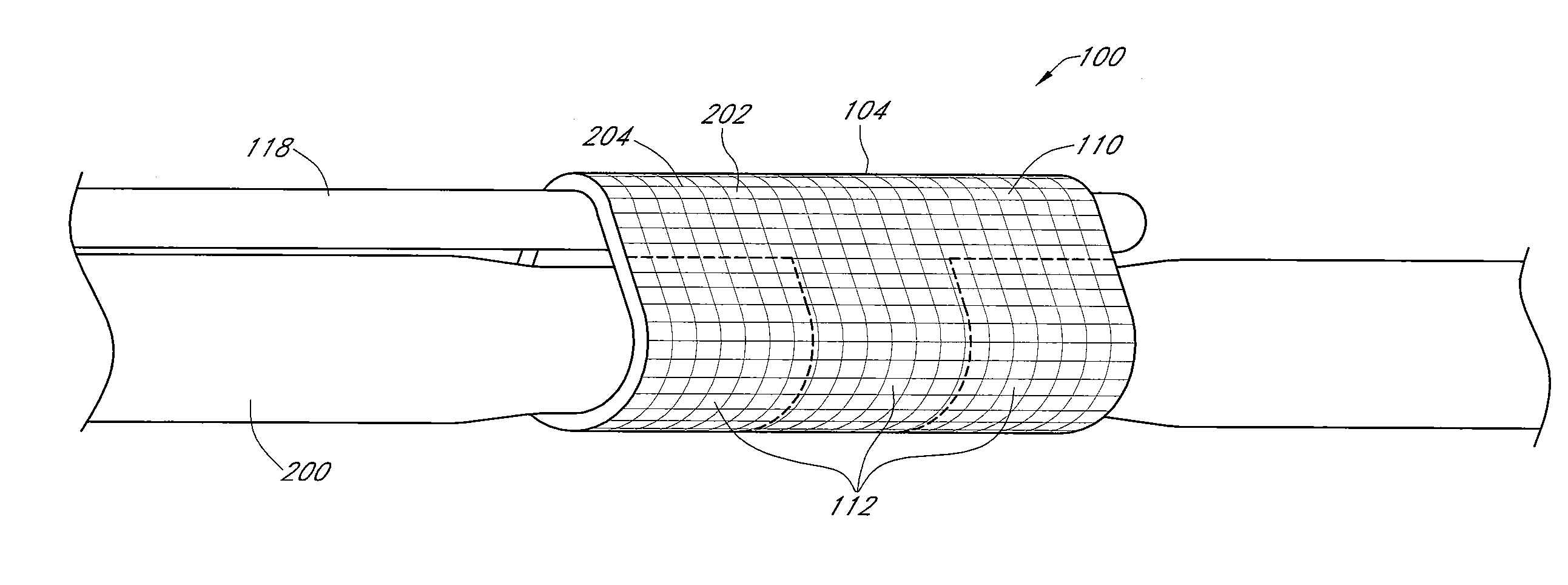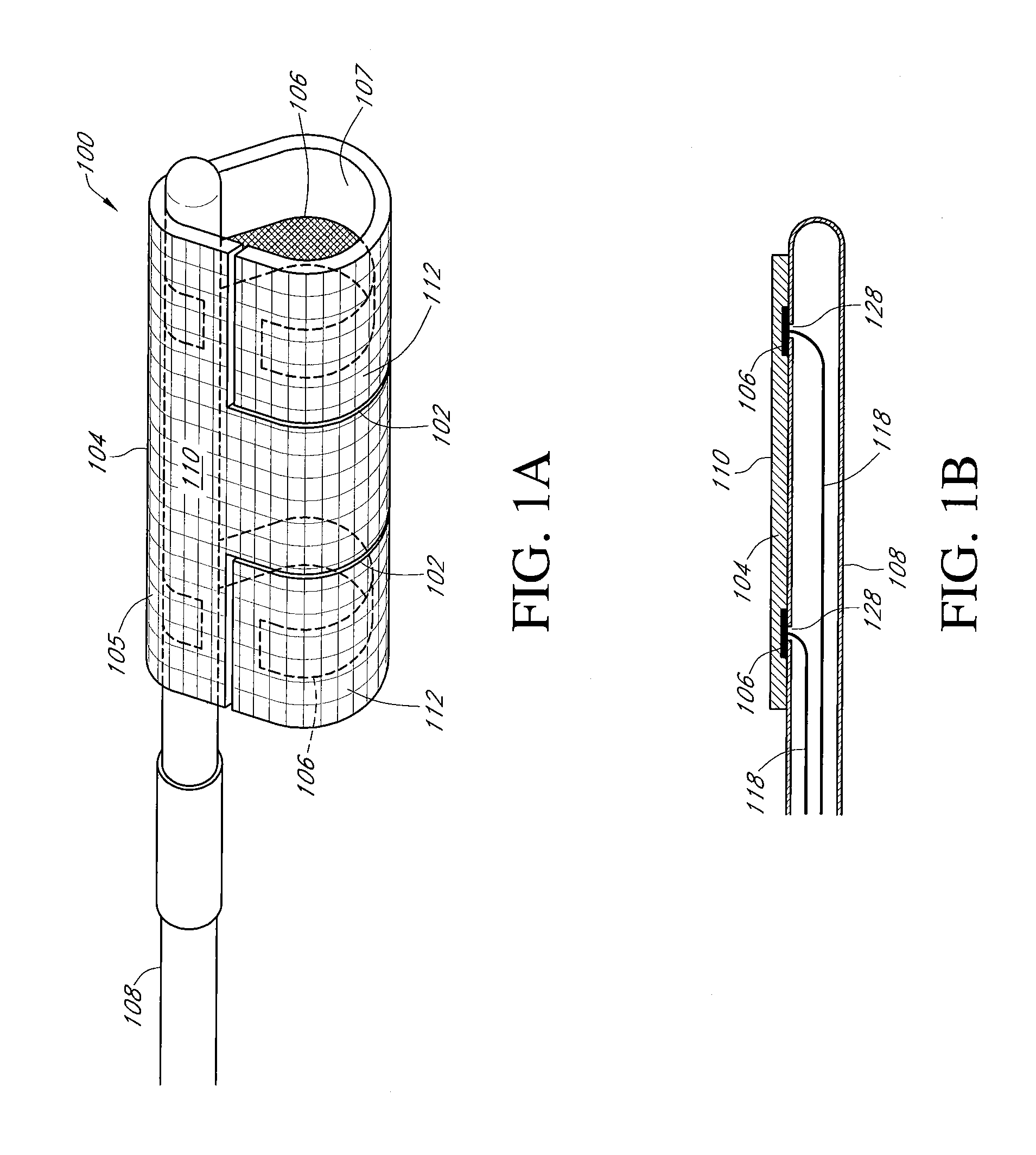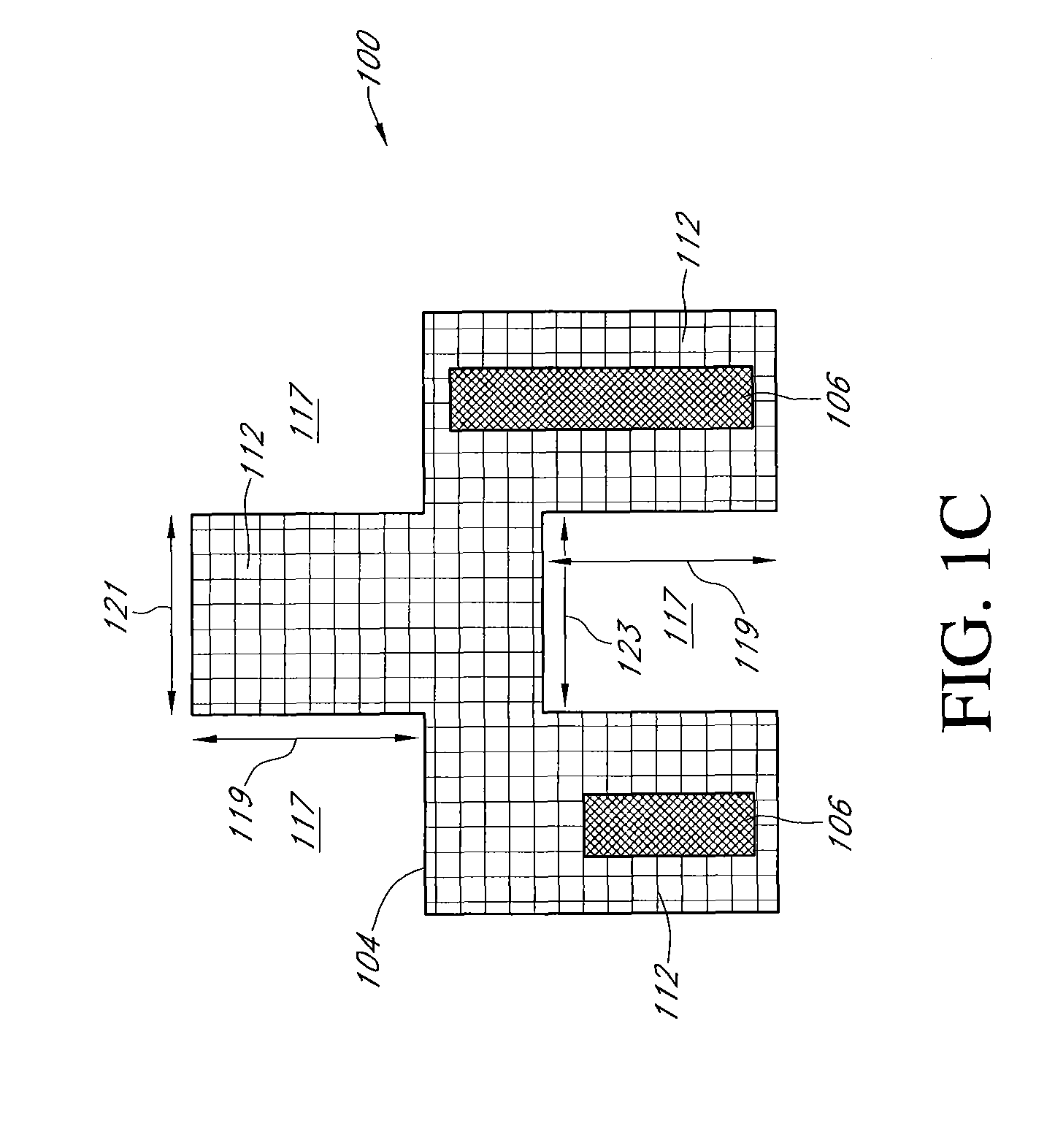Shielded electrode assembly for effective nerve sensing and stimulation
- Summary
- Abstract
- Description
- Claims
- Application Information
AI Technical Summary
Benefits of technology
Problems solved by technology
Method used
Image
Examples
Embodiment Construction
[0023]Embodiments of the present disclosure provide an electrode assembly 100 possessing an enveloping conductive element 110 which acts to provide shielding from electrical noise. The shielded electrode assembly 100, illustrated in FIGS. 1A-B, is configured to be readily positioned proximate to a nerve 200 (FIG. 2) in order to sense nerve activity on the nerve 200 while providing improved isolation from external electrical noise which may be present within the patient's body. As will be described herein below, in one preferred embodiment, photolithographic techniques are employed to provide the conductive element, such as a mesh, on at least a portion of an outer surface 105 of the electrode assembly 100 for shielding purposes.
[0024]In one implementation, the electrode assembly 100 may be designed for long-term implantation and use with implantable medical devices capable of providing therapeutic stimulation. In another implementation, the conductive element 110 greatly enhances th...
PUM
 Login to View More
Login to View More Abstract
Description
Claims
Application Information
 Login to View More
Login to View More - R&D
- Intellectual Property
- Life Sciences
- Materials
- Tech Scout
- Unparalleled Data Quality
- Higher Quality Content
- 60% Fewer Hallucinations
Browse by: Latest US Patents, China's latest patents, Technical Efficacy Thesaurus, Application Domain, Technology Topic, Popular Technical Reports.
© 2025 PatSnap. All rights reserved.Legal|Privacy policy|Modern Slavery Act Transparency Statement|Sitemap|About US| Contact US: help@patsnap.com



